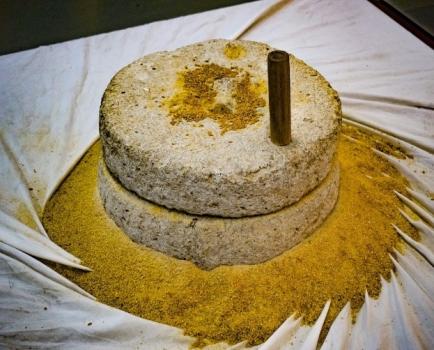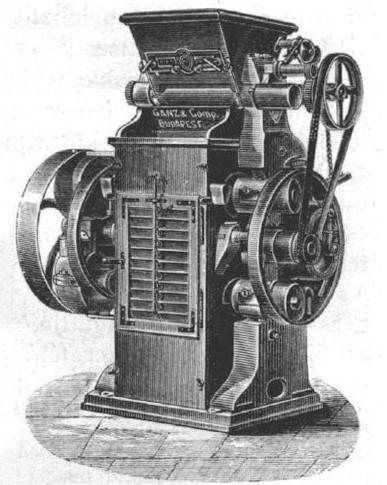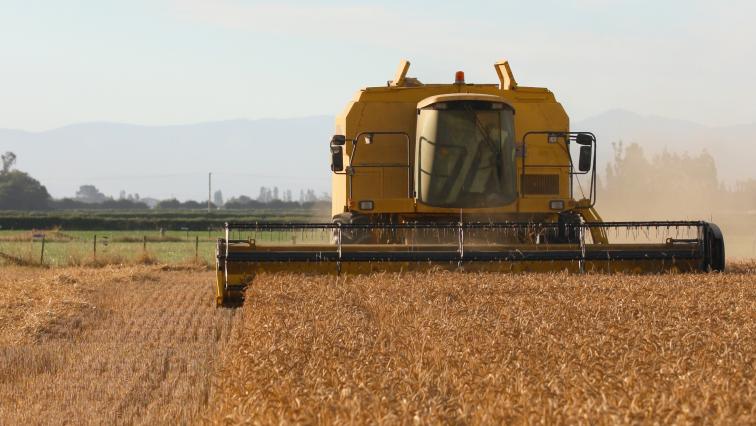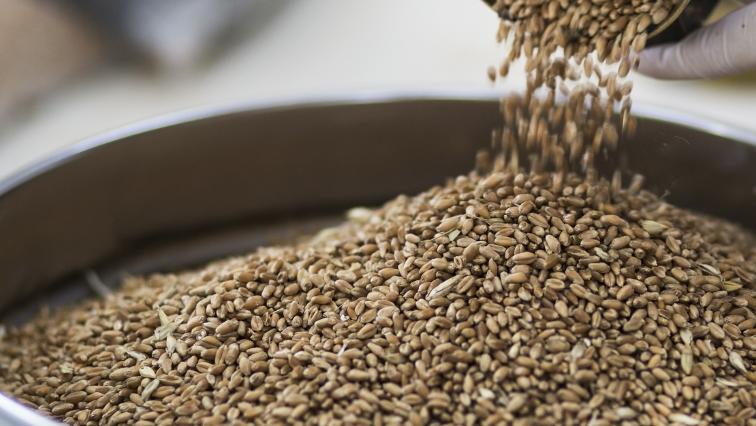Cereal grains were an important part of the diet of ancient man as they are today.
As a food they were extremely valuable because in a dry state they could be stored from year to year. Even today storage is still an important aspect and is one of the reasons for the wide use of grains around the world as a food staple.
Raw wheat however is not particularly palatable and man needed to discover that by soaking and boiling grains made it more edible.

A major discovery was that grain could be ground to make a meal by rubbing wheat grains between two stones.
Originally this was done by rubbing wheat between a small stone held in the hand and a large "saddle" stone lying on the ground which required a lot of hard work. It's efficiency was improved by cutting grooves in the faces of the stones, and by fixing the upper stone to a lever that reduced the effort required.
A backwards and forwards motion is very wasteful and real advance came with rotary motion and the invention of the quern.
The quern consisted of two round flat stones one above the other. The upper stone was turned by a wooden handle, wheat was fed in through a hole in the centre, was ground between the stones, and came out around the edges as ground wheat.

Up until Roman times, the grinding of wheat to make a meal had mostly been carried out in the home.
Roman times saw the beginnings of the milling industry as we know it today, with an increase in the size of the mill stones and a change in their shape.
With the increased size, animals as well as slaves were used to turn the stones. The milling process was carried out in the bakery with water then used to power the millstones using a paddle wheel.
The Romans discovered that a more palatable product could be made by sieving the ground wheat. The whiter flour obtained by sieves made of horse hair was called pollen which means fine powder.
The especially fine grade they called flos a word that meant the best part of anything. They used the same word for a flower being the best part of the plant. So originally these words, flour flower, were the same.

Very little changes occurred in the actual milling process between Roman times and the 1700's.
There was however considerable progress made in the associated mechanics such as the methods of driving the stones, and their setting and feeding. In fact, many of today's mechanical devices were invented during this time.
The most important development was the Centrifugal Governor which was patented in 1797 and later successfully adapted to the steam engine.
The Centrifugal Governor was invented by James Watt. It is used to control and regulate the speed of an engine by increasing or deceasing the amount of fuel allowed into the cylinders.
The later versions of wind and water mills incorporated many automatic controls, together with alarm systems to alert the miller when things were going wrong.
Essentially the beginning of process automation.
The next major developments came during the 1700's and 1800's.
They were "high" milling processes and improved methods of separating the constituent parts of the ground stocks.

The High milling machine is said to be a Hungarian invention.
Certainly, it reached its highest state of development in Hungary, though when introduced to America it was called the "French" system.
It involved the use of several pairs of millstones with coarse grooves and a wide gap on the first pair, hence the name "high". Finer grooves and narrower gaps were set on succeeding pairs of stones. The use of more stones meant more handling of stocks and this led to the development of the "automatic" mill, in which the hard work of transferring grain and stocks was done by machines rather than by hand.
The vertical arrangement of the mill dates from this time, the grain being raised to the top of the mill building, and then flowing downwards through successive machines.

Many more machines were introduced to separate the constituent components of the flour.
From the early hand-shaken sieve, the modern plansifter has been developed. In the 1700's some millers had used air currents in wheat cleaning and in cooling stocks but in the early 1800's it was realised that stocks could be separated using a sieve.
The Hungarians also discovered that bran could be floated to the surface of a tub of meal and scraped off. This layering principle was combined with the use of air currents to develop the modern purifier.
These stock separating devices used today were discovered before the great revolution in milling.

The substitution of steel rollers in place of the flat mill stones started the Great Revolution in Milling.
The first successful roller mill operated in Switzerland in 1834 and within five years were operating throughout central Europe.
Due to the considerable vibration, the rolls were placed in the lower floors of the mill which is usually where they are located in a modern flour mill. The use of metal break rolls spread to Britain in the 1870's and to North America in the 1880's.
The use of smooth rolls for the reduction part of high milling was a discovery of the 1870's that was very quickly in wide use replacing the millstones. Porcelain rolls were used for a time although these were eventually replaced by steel.
By 1900 most of the common machines used in a present day mill had been developed. The handling of materials in sacks and buckets had been replaced in the automatic mill by mechanical transfer with bucket elevators and worm conveyors.
Since the Second World War there has been the introduction of pneumatic conveying of stocks from one machine or place to another. Along with this has come better dust collection systems, with high efficiency filters and cleaning mechanisms


